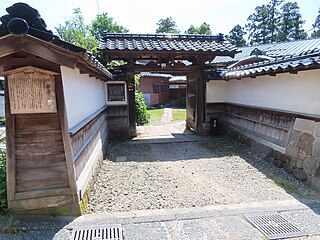37 Sights in Kanazawa, Japan (with Map and Images)
Legend
Welcome to your journey through the most beautiful sights in Kanazawa, Japan! Whether you want to discover the city's historical treasures or experience its modern highlights, you'll find everything your heart desires here. Be inspired by our selection and plan your unforgettable adventure in Kanazawa. Dive into the diversity of this fascinating city and discover everything it has to offer.
Sightseeing Tours in KanazawaActivities in KanazawaKanazawa Castle is a large, partially restored Japanese castle in Kanazawa, Ishikawa, Japan. It is located adjacent to the celebrated Kenroku-en Garden, which once formed the castle's private outer garden. It was the headquarters of Kaga Domain, ruled by the Maeda clan for 14 generations from the Sengoku period until the coming of the Meiji Restoration in 1871.
2. Kenrokuen Park
Kenroku-en , located in Kanazawa, Ishikawa, Japan, is a strolling style garden constructed during the Edo period by the Maeda clan. Along with Kairaku-en and Kōraku-en, Kenroku-en is considered one of the Three Great Gardens of Japan and is noted for its beauty across all seasons, particularly in winter. Spread over nearly 25 acres, features of the landscape include meandering paths, a large pond, several tea houses, and one of Japan's oldest fountains. First opening to the public in 1871, the garden was later designated a National Site of Scenic Beauty in 1922, and subsequently received status as a National Site of Special Scenic Beauty in 1985. The grounds are open through paid admission year-round during daylight hours.
3. Daijōji Temple
Daijouji is a Soto Zen temple located in Nagasaka-cho, Kanazawa City, Ishikawa Prefecture. The mountain name is Toukouzan, and it was formerly known as Kinshihou. It has a monk's hall. During the Edo period, the rules for monk training were restructured here and were referred to as Kiku Daijou.
4. Shiinoki Cultural Complex, Ishikawa Prefecture

The Ishikawa Prefectural Government Memorial Guest House is a multi-purpose facility newly opened on the site of the former Ishikawa Prefectural Government Building in Hirosaka, Kanazawa City, Ishikawa Prefecture. It is commonly known as the Shinonoki Guest House.
5. The Kanazawa Theatre

Kanazawa Opera Theatre is a multi-purpose hall located in Shimohonda-cho, Kanazawa City, Ishikawa Prefecture. On October 1, 2007, the name was changed from the former Kanazawa City Tourism Center from the beginning of its opening.
6. Tentoku-in
Tentokuin is a Soto Zen temple located in Kodatsuno, Kanazawa City, Ishikawa Prefecture. The mountain name is Kinryuzan. The temple's name is derived from the posthumous name of the legal wife of the Kaga feudal lord Maeda Toshitsune, known as Tentokuin-dono Ken'un Junsei Daizenjōni.
7. Pref. Museum of history- 加賀本多博物館

Kaga-Honda Museum is a museum located in Kanazawa City, Ishikawa Prefecture. The Public Interest Incorporated Foundation Domain's Old Honda Zojinkan is the main operator of the project and operates it.
8. Mt. Daimon
Daimonzan is a mountain with an elevation of 1,572 m located on the border between Kanazawa City in Ishikawa Prefecture and Nanto City in Toyama Prefecture, in the northern part of the Ryohakusan Mountains. It is also known as "Kaga Fuji."
9. Ishiura Shrine
Ishiura Shrine is a shrine located in Honda-cho, Kanazawa City, Ishikawa Prefecture. The former company name was a prefectural company. The name at the time of its founding was "Miwa Shrine". It is a Shikiuchi shrine that is compared to the small shrine "Miwa Shrine" in Kaga District, Kaga Province, and is said to be the oldest shrine in Kanazawa City.
10. Ohi Museum
The Ohi Museum is a private art museum located in Hashiba-cho, Kanazawa City, Ishikawa Prefecture. It features exhibitions of tea utensils centered around works from the Ohi pottery lineage. The adjacent Ohi Gallery also sells works by Ohi Tōyasa and the 11th generation Ohi Chōzaemon (Toshio).
11. Gyokusen-en Garden
Gyokusen-en is a pond-spring walking garden located in Kanazawa City, Ishikawa Prefecture. In the park, there is the oldest tea room in Kanazawa, Saisetsutei, and a tea room that is a copy of Urasenke Kanuntei.
12. 金沢湯涌江戸村
Kanazawa Yuwaku Edo Village is a public history museum located in Yuwaku Onsen, Kanazawa City, Ishikawa Prefecture. It was established with the aim of deepening the understanding of historical culture and promoting culture by relocating and preserving buildings from the Edo period. It opened in September 2010.
13. Kanazawa Shinto Shrine
Kanazawa Shrine is a shrine located in Kanazawa City, Ishikawa Prefecture. It enshrines Sugawara no Michizane as its main deity. It is one of the shrines that became popular in the late Edo period to early Meiji period, dedicated to the founders of feudal domains. It is also written as Kanazawa Jinja. It is adjacent to Kenrokuen Garden.
14. Ozaki Shrine
Ozaki Shrine is a shrine located in Kanazawa City, Ishikawa Prefecture. Enshrines Amaterasu, Tosho Daigongen, and Maeda Toshitsune, the third lord of the Kaga Domain. The vermilion-painted shrine hall was studded with the crest of Tokugawa Ieyasu, and it was revered as Edo of Kanazawa Castle and Nikko of Hokuriku. One of the shrines dedicated to the feudal ancestors that was popular from the late Edo period to the early Meiji period. It is also known as Kanazawa Toshogu.
15. Seisonkaku Villa
The Seisonkaku (成巽閣) is a large Japanese villa in the city of Kanazawa, built in 1863 by Maeda Nariyasu (1811–1884), 13th daimyō of the Kaga clan, as a retirement home for his mother Shinryu-in (眞龍院). A collection of her personal effects is open to the public.
16. Myôryûji (Ninjadera Temple)
Myōryū-ji (妙立寺), commonly known as Ninja-dera, is a Buddhist temple belonging to Nichiren sect located in the city of Kanazawa, Ishikawa, Japan. While not actually associated with ninjas, the temple earned its nickname because of its many deceptive defences.
17. Ishikawa Gokoku Shrine
Ishikawa Gokoku Shrine is a shrine (Gokoku Shrine) located in Kanazawa, Ishikawa Prefecture, Japan. It is located next to Kenrokuen Garden in the center of the city. It is one of the largest shrines in Ishikawa Prefecture.
18. Nichi-chaya-gai

Nishichaya Street is a teahouse district located in Nomachi 2-chome, Kanazawa City, Ishikawa Prefecture. It is said to be counted as one of the three major teahouse districts in Kanazawa (Higashi Chaya Street, Chikakemachi Chaya Street).
19. 蓮覚寺
Renkakuji is a Nichiren sect temple located in Higashiyama 2-chome, Kanazawa City, Ishikawa Prefecture. The mountain name is Hongakuzan. The former head temple is Myokenji (Shijo school), and it is associated with the Yushi sect. Known as the Seven Faces of Utatsu, it contains the ancestral graves of the Kamiki family, the family of Jofukuin, the mother of Kaga feudal lord Maeda Toshitsune. Additionally, the area is home to many temples in the Utatsu Mountain foothills.
20. Mt. Tomuro

Mt. Tomuro is a Quaternary volcano with an altitude of 548 m in the eastern part of Kanazawa City, Ishikawa Prefecture. Lava cones (lava domes). In terms of scenery, half of the mountain body is missing, and the city of Kanazawa side is a concave symmetrical mountain, creating a beauty that harmonizes well with the wide foothills of Mt. Iou in the background. It is included in the Iouyama Prefectural Natural Park.
21. Mt. Utatsu
Mount Utatsu is a mountain in Kanazawa, Ishikawa Prefecture, Japan. It is also known by a number of other names, including Mount Mukai , Mount Mukō , Mount Garyū , and Mount Kasuga . It is visible to the east of Kanazawa Castle and has Toyokuni Shrine located on its slopes.
22. 三宝寺
Sanpoji Temple is a temple of Nichiren Buddhism located in Higashiyama, Kanazawa City, Ishikawa Prefecture. The name of the mountain is Mt. Kobo. The former main temple is Myōsei-ji Temple in Hakui City. It enshrines a wooden statue of Akiyama, known as the god of hemorrhoids.
23. Mt. Mikoshi
Mikoshiyama is a mountain with an elevation of 1,621 meters located on the border between Kanazawa City in Ishikawa Prefecture and Nanto City in Toyama Prefecture, and it is the second highest peak in Kanazawa City.
24. Koganji Temple

Koganjiji is a Nichiren sect temple located in Teramachi 5-chome, Kanazawa City, Ishikawa Prefecture. The landscape of the temple, featuring the main hall and bell tower, forms the core of the Teramachi temple group and occupies an important position. The mountain name is Myoeizan. The former head temple is Honkokuji (Rokujomon school), and it is affiliated with the Yushi sect.
25. 蓮昌寺

Renjōji is a Nichiren sect temple located in Higashiyama, Kanazawa City, Ishikawa Prefecture. Its mountain name is Fukōzan. The former head temple is Myōken-ji (Shijō school), and it is affiliated with Yōshi. The mountain gate is designated as a cultural property by the city. It is one of the temples that make up the Uchinzan foothill temple group.
26. チカモリ遺跡公園
The Chikamori Site is an archaeological site with the ruins of a late Jōmon period settlement in what is now the Shinbohon neighbourhood of the city of Kanazawa, Ishikawa in the Hokuriku region of Japan. It was designated a National Historic Site of Japan in 1987.
27. 妙泰寺
Myotai-ji is a Nichiren sect temple located in Higashiyama, Kanazawa City, Ishikawa Prefecture. Treasures of the temple include documents related to the Kaga domain's fire arrow department (Koryo Ogawa-style fire arrow documents). The mountain name is Otani-san. The former head temple is the Daibonzan Myoken-ji (Shijo school), and it is affiliated with the Yushi sect.
28. 本興寺
Honkoji Temple is a temple of Nichiren Buddhism located in Yakushi-choro, Kanazawa City, Ishikawa Prefecture. The name of the mountain is Mt. Ichijo. The former main temple is the main temple of Kyoto, and the Shioshi Hoen. One of the ancient temples of Nichiren Buddhism in Hokuriku. Enshrine the wooden statue of Nichiren Saint, a designated cultural property of Kanazawa City.
29. 立像寺

Ryuuzouji is a Nichiren sect temple located in Teramachi 4-chome, Kanazawa City, Ishikawa Prefecture. Its mountain name is Myoubusan. The former head temple is Ritsuhonji in Kyoto, and it is affiliated with the Choushi sect. The main hall and bell tower, designated as cultural properties of Kanazawa City, are valuable structures representing Edo period temple architecture in Kanazawa. The site of Juukakuen.
30. 真成寺
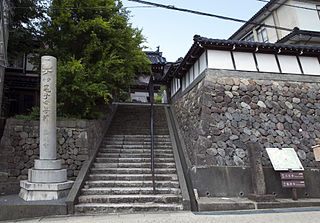
Shinjoji Temple is a temple of Nichiren Buddhism located in the temple complex at the foot of Mt. Ushinzan in Higashiyama, Kanazawa City, Ishikawa Prefecture. The name of the mountain is Mt. Myoun. The former main mountain is Takitani Myoseiji Temple, Shioshi Hoen.
31. 妙正寺
Myoshōji is a Nichiren sect temple located in Higashiyama, Kanazawa City, Ishikawa Prefecture. Its mountain name is Shōjinzan. The former head temple is Takidani Myōjōji, affiliated with Yūshi. It enshrines a statue of the Buddha Shakyamuni in a standing position.
32. 金沢城北市民運動公園
Kanazawa Johoku Citizen's Sports Park is an urban park (sports park) located in Isobe Town, Kanazawa City, Ishikawa Prefecture. The entire park is under the jurisdiction of Kanazawa City, but each facility is managed by a separate designated manager.
33. 全性寺

Zenshoji Temple is a temple of Nichiren Buddhism located in Higashiyama, Kanazawa City, Ishikawa Prefecture. The name of the mountain is Mt. Myogushan. The former main temple is Ōmotoyama Myokenji Temple (Shijōmon-ryū), Ryūshi Hoen. The mountain gate is a designated cultural property of Kanazawa City.
34. 妙国寺
Myokokuji is a Nichiren sect temple located in Higashiyama, Kanazawa City, Ishikawa Prefecture. Its mountain name is Hinatazan. The former head temple is Myokakuji in Kyoto, affiliated with the Tenshi school.
35. National Crafts Museum
The National Crafts Museum is a museum of Japanese crafts in Kanazawa, Ishikawa Prefecture, Japan. Still retaining the more formal, official designation National Museum of Modern Art, Tokyo Craft Gallery (東京国立近代美術館工芸館), it forms part of the Independent Administrative Institution National Museum of Art . As part of the government policy of regional revitalization, the facility relocated in 2020 from Kitanomaru Park in Tokyo, where it first opened in 1977. It is now housed in two Western-style buildings of the Meiji period that have themselves been relocated from elsewhere in Kanazawa, reassembled, and restored, the 1898 Old 9th Division Command Headquarters and 1909 Old Army Generals Club. From the collection of some 3,800 items, by craftsmen from all over Japan, some 1,900 have been transferred, including approximately 1,400 by "holders" and preservers of Important Intangible Cultural Properties, who are often referred to as "Living National Treasures", and members of the Japan Art Academy.
36. D. T. Suzuki Museum
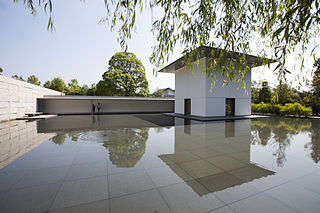
The D. T. Suzuki Museum opened in Kanazawa, Ishikawa Prefecture, Japan in 2011. Dedicated to the life, writings, and ideas of Kanazawa-born Buddhist philosopher D. T. Suzuki, the facility, designed by Yoshio Taniguchi, includes a contemplative space overlooking the Water Mirror Garden.
37. Honda-no-Mori Hall

Honda's Mori Hokuden Hall is a concert hall located in Ishihiki, Kanazawa City, Ishikawa Prefecture. The hall is owned by Hokuriku Electric Power Co., and it is operated by the Honda Forest Hall Management Committee.
Share
Disclaimer Please be aware of your surroundings and do not enter private property. We are not liable for any damages that occur during the tours.





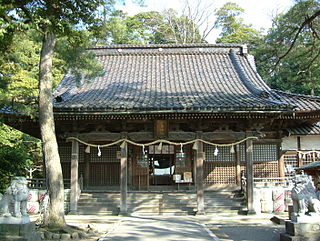





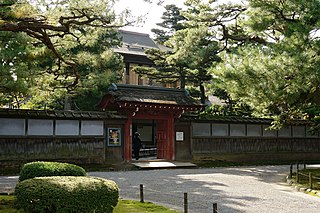
.jpg)






